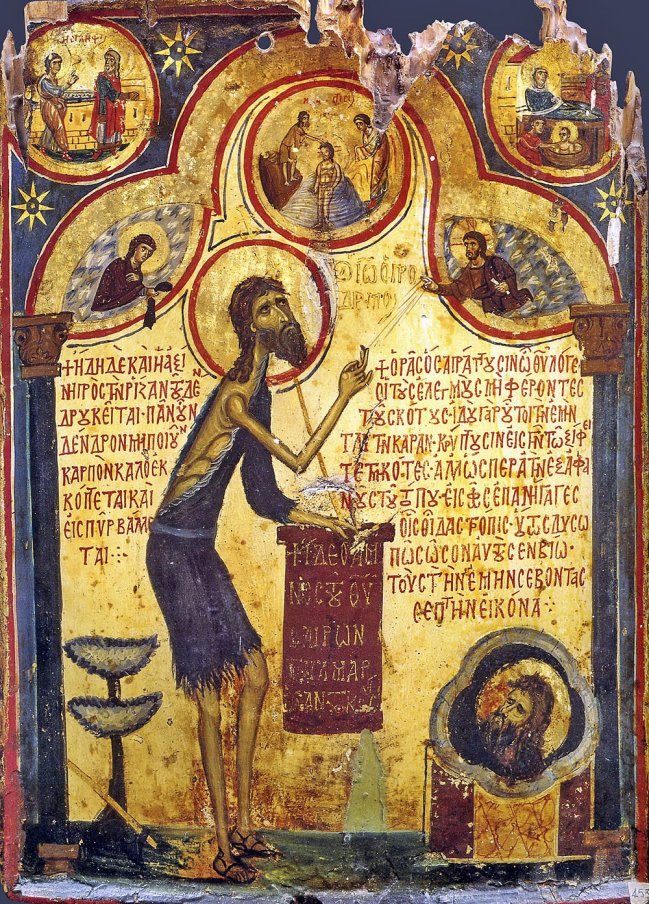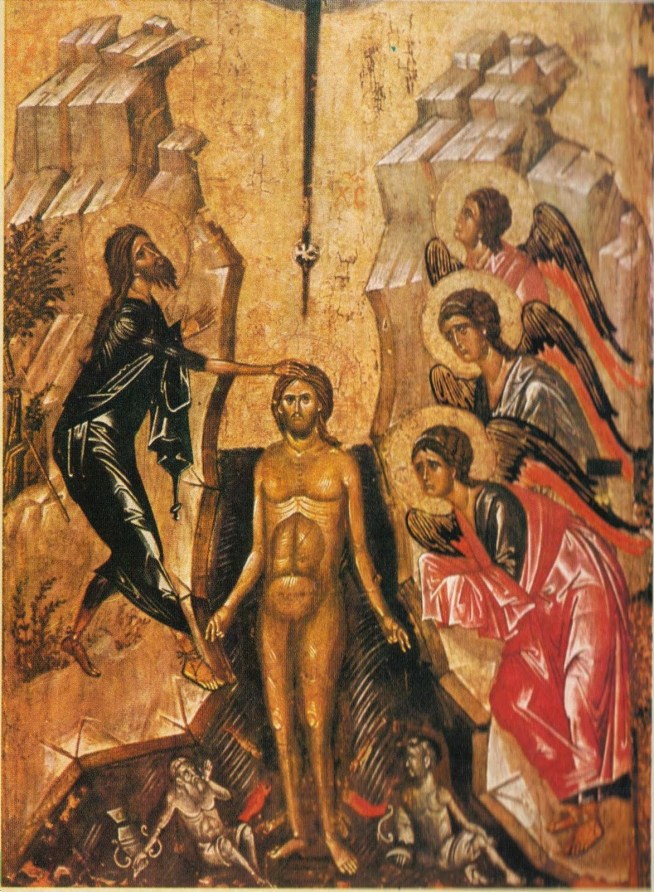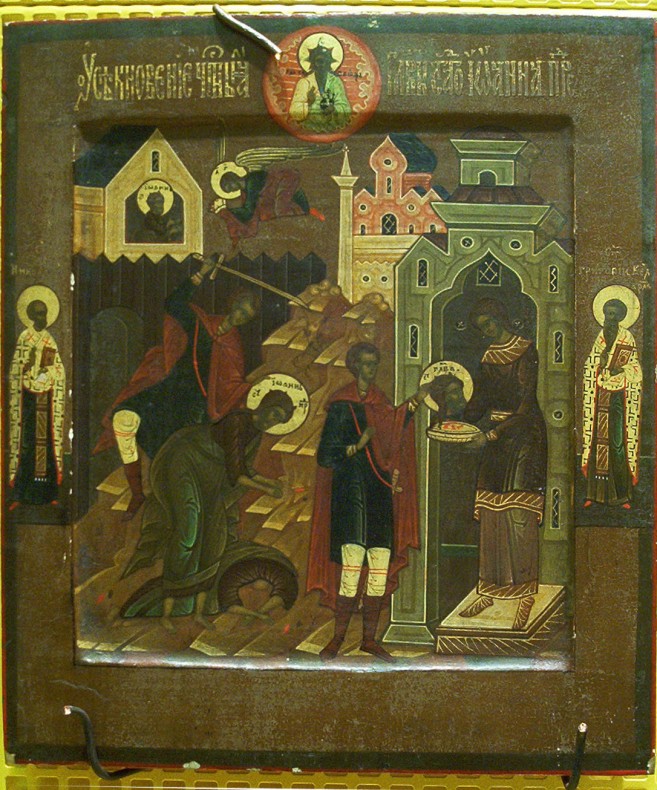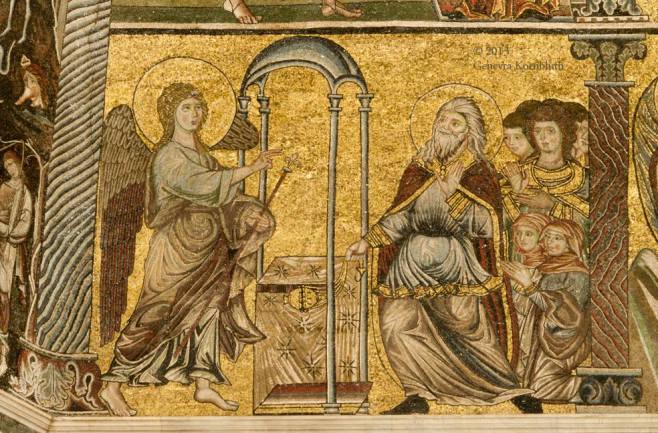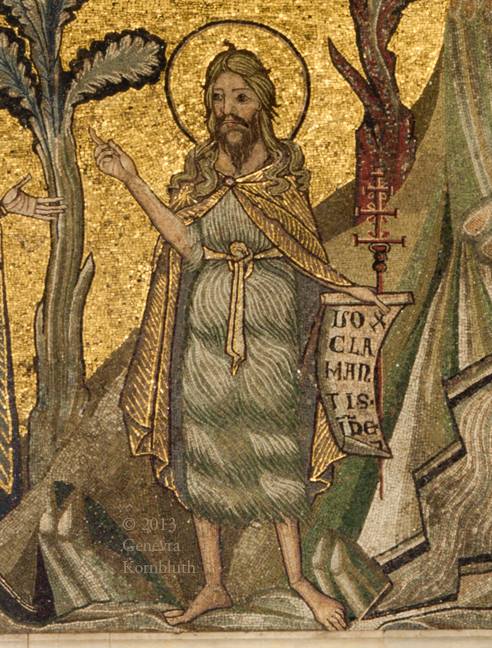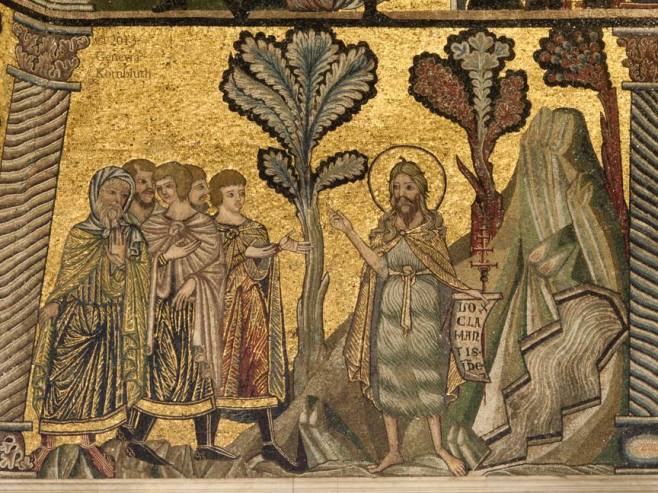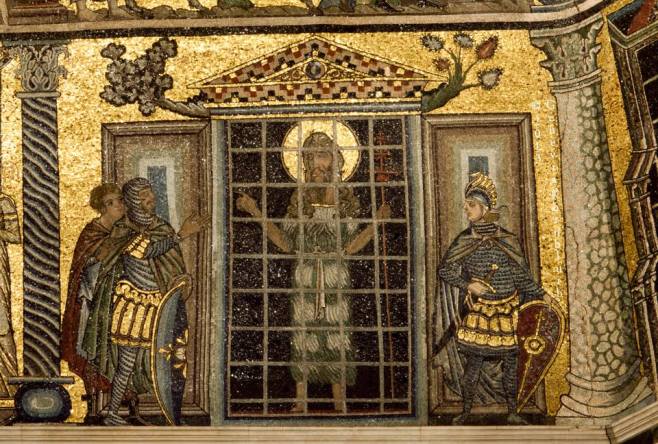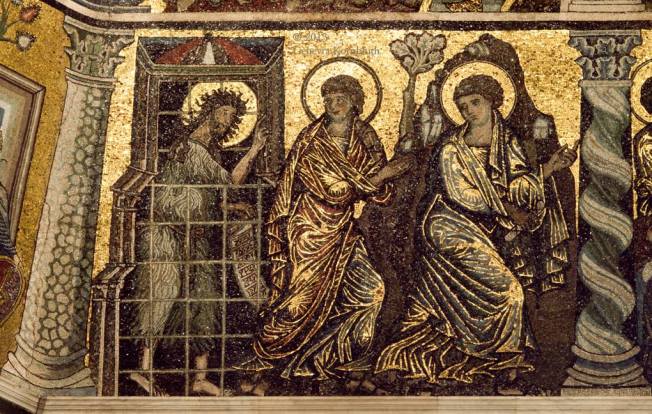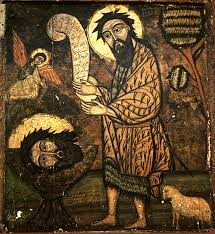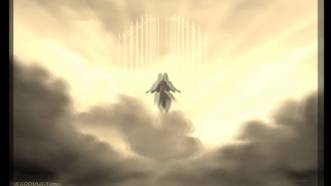Three Vignettes
The Antiochian Orthodox Christian Archdiocese of the British Isles and Ireland held its first Archdiocesan Conference with our own resident Metropolitan, Sayedna Silouan at the Hayes Conference Centre, Swanwick, Derbyshire from Monday 23rd May to Wednesday 25th May 2016. This conference ‘welcomed’ me to the UK, initiated me to the Glory of Orthodoxy in Great Britain and drafted me to the (Antiochian) English Orthodox Church. Amidst its brilliant theological talks, its moving church services, and its heart-warming communion with my brothers and sisters in Christ, three pairs of eyes, three vignettes haunt my memory.
Ezekiel 1 :16—28
“The appearance of the wheels and their work was like unto the colour of a beryl: and they four had one likeness: and their appearance and their work was as it were a wheel in the middle of a wheel. When they went, they went upon their four sides: and they turned not when they went. As for their rings, they were so high that they were dreadful; and their rings were full of eyes round about them four. …. And when they went, I heard the noise of their wings, like the noise of great waters, as the voice of the Almighty … Above the vault over their heads was what looked like a throne of lapis lazuli, and high above on the throne was a figure like that of a man. … As the appearance of the bow that is in the cloud in the day of rain, so was the appearance of the brightness round about. This was the appearance of the likeness of the glory of the LORD. And when I saw it, I fell upon my face, and I heard a voice of one that spake.”
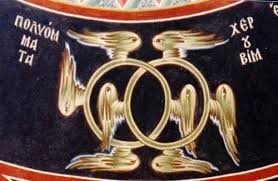
The Pending
1 Kings 19:11
“And he said, Go forth, and stand upon the mount before the LORD. And, behold, the LORD passed by, and a great and strong wind rent the mountains, and brake in pieces the rocks before the LORD; but the LORD was not in the wind”
His eyes were the most vibrant, fiery, scorching eyes I had ever encountered. Yet, full of Love! Our Bishop is a very young and most intense man. He took me aside and began to ask the most probing questions, piercing holes to my heart. It felt like Confession rather than conversation. I was fast reduced to tears.
‘Why are you crying?’ ‘Out of joy!’ ‘Why?’ ‘For being with you!’ How else could it be before such blazing purity?
He did not mince his words. ‘All this is a Cross to me.’ ‘Why, Sayedna?’ (It is not that I did not know that being a bishop is a cross. If a novice needs the patience of a wagon, the hegumen needs a whole train! I remember reading this in a book once.) ‘Why? What would you rather do?’ ‘I would rather be in a monastery. Any monastery. Any where. In Syria. In Greece. Any where. As long as I were in a monastery.’
(This fast became a refrain in many conversations during the conference. So many people here would rather be in a monastery but were called by the Lord to work for Him in the world. Frustrating yes, exhausting yes- sacrificial most certainly, but could they do anything else in order to follow Jesus? No! )
‘I have come here out of love.’ ‘So many people here, Sayedna, want to go to a monastery.’ ‘Would you like that too?’ ‘Yes, but we are still young and we must work for Him’. Such prescience, such bright sorrow in his eyes!
Suddenly, out of the blue, a middle-aged Anglican kneels before him and asks for his blessing! The year he had spent during his Cambridge studies in Balamand (!), Syria, Lebanon and Turkey “was the happiest in his life!”
‘Come home!’ another ‘convert’ invites him. ‘But I am a Westerner. How can it be?’ ‘So am I.’ the other replies. ‘Why stay at the Church of England if your heart is Orthodox? Come home!’ And: ‘Why do you make further schisms rather than return back to the original faith, the source?’
He, too, is fast reduced to tears and kneels, unable to utter a word. It is not the questions themselves but the ‘authority’ and holiness of the person who is asking them. These eyes! The ‘Reluctant’, Doubting Anglican may not be ready (yet) to make the leap of faith! But a hole in his heart has been made!
The Proselyte
1 Kings 19:12
“And after the wind an earthquake; but the LORD was not in the earthquake”
She was a newly-baptised Muslim Convert. She kept telling everyone that she was only twenty days old! And indeed her eyes were the kindest, purest and brightest ones I had encountered for a very long time. ‘Please pray for us. The Holy Spirit is so near you these days!’
She is hearkening back to that “memory of the glory that I had when I was entirely with You and entirely in You, before time and temporal illusions.
When I, too, was a harmonious trinity in holy unity, just as You are from eternity to eternity.
When the soul within me was also in friendship with consciousness and life.
When my soul also was a virginal womb, and my consciousness was wisdom in virginity, and my life was spiritual power and holiness.
When I, too, was all light, and when there was no darkness within me.
When I, too, was bliss and peace, and when there were no torments of imbalance within me.
When I also knew You, even as You know me, and when I was not mingled with darkness.
When I, too, had no boundaries, no neighbors, no partitions between “me” and “you.” (St. Nikolai Velimirovich, Memories – Prayers By the Lake XXX)
Such purity and newness of Life, Light and Harmony reflected in her eyes! Indeed, “the eye is the lamp of the body; so then if your eye is clear, your whole body will be full of light.” (Matthew 6:22)
She was so eager to learn and yet she was teaching all of us! Her parents had not been told of her baptism, and there was no way she was going back to her homeland.
‘How were you drawn to the Faith?’ ‘Christ Himself appeared in person twice to me and called me, but I was not ready to take that step then. I did not have the guts. Yet in the end, I just could not ignore His calling! I had to become an Orthodox, even if that meant that I would be irreparably separated from my family and relatives and become a stranger in my own country and an exile.’
‘How are you feeling?’ ‘I am in Heaven’. (Radiant Smile) As if it did not show …
The Prescient Priest
1 Kings 19:13
“And after the earthquake a fire; but the LORD was not in the fire. And after the fire a still small voice. When Elijah heard it, he pulled his cloak over his face and went out and stood at the mouth of the cave. …”
He was a ‘convert’ too. His eyes were by far the most playful I had ever encountered! ‘Clean’ and fresh like an ocean breeze, magical, charming, fairylike, sprightly, with elfin grace, conjuring deep, green forests and starry nights! Who said that holiness is forbidding and austere? This priest is the most humble and welcoming I have ever received a blessing. You feel like an innocent small child in his presence. Still, he is so otherwordly, light and free! Literally floating!
At a break between talks, I whisper to a friend of mine: ‘Let us go and get his blessing! He is such a holy man, so special and close to God!’ She readily agrees. Before however a move is made or a look is exchanged, something most unexpected happens. He could not have listened! He is far away, across the hall! And yet, the moment my words are uttered, he suddenly fixes his eyes meaningfully on me, smiles mischievously with elfin delight, apparently most ‘proud’ at his practical joke, and starts to make a funny pantomime, as if he is ‘escaping’ from us!
Wait a minute! This cannot be happening! I run to his side and ask him: ‘How on earth, pappouli, did you hear? Or know what we were planning to do? You can’t have possibly heard us at such a distance!’ ‘Of course, I can’, he answers smiling even more elfishly. ‘I am so proud and conceited that I am always eavesdropping, eager to listen to other people’s praises!’
He is not telling the truth, of course. And his blessing is a small miracle that seals my participation at this conference. Ever since, I feel his prayers, and bless the Lord for allowing me to “see through a glass, darkly; but then face to face”, for catching a glimpse of Orthodoxy in Great Britain through the eyes of the prescient priest!

